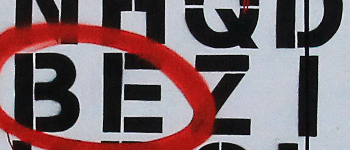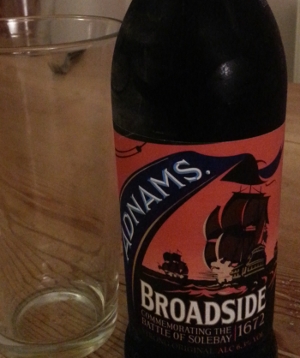This can be a strangely perplexing question when you’re sunk deep in the writing process. Sometimes the only answer available to me is something like “It’s about 5000 words.”
[I wrote that line before I read this lovely post by Neil Gaiman about the death of Iain Banks. It seems Banks was once what The Wasp Factory is about and replied “It’s about 180 pages”.]
I can afford to feel my way to the root of a short story as I work. I can back up and run again at the problem as many times as necessary
Some people apply this approach to novel writing, too. For them, it’s only by writing the novel they discover its heart. For a narrative that might weigh in at 90,000 words, this can be a costly process, though. Others argue that it’s better to have a sense of a story’s core before you begin writing.
To this end, many writers use a premise statement (or, in screenwriter parlance, a logline). The premise statement distils the essence of a story. According to its advocates, it comes into its own both at the very beginning and at the very end of the novel’s project. At the end, it provides the kind of summation you might offer to a publisher or an agent. At the start, it provides a trajectory for your writing. It keeps you on course, whether you’re outlining or not.
Laura Whitcomb, author of Novel Shortcuts writes:
The premise is a statement that briefly describes your story. it covers the main issue, the problem that arcs across the entire novel. For me, a good premise also needs to state whom the story is about and where the story takes place.
So, that’s character, problem, and setting. Whitcomb stresses that all three of these should be vivid and well-developed. In particular the problem should be serious, intractable (make sure there isn’t an obvious solution that you’re conveniently ignoring for plot purposes), and durable enough to sustain an entire novel.
In Outlining Your Novel, KM Weiland argues that a premise sentence should identify the novel’s central idea, its protagonist and its core conflict. So, the premise sentence for her novel Dreamlander is:
Renegade Journalist Chris Reston discovers his dreams are really memories of a world he lives in while he sleeps, which he will, reluctantly, have to fight to save from destruction.
We might render this as a formula something like:
[protagonist with characteristic] [lives in the world of the novel’s idea] [and must fight in some way] [to achieve an important thing]
Or, perhaps
[protagonist with characteristic] [encounters seemingly insurmountable problem] [and must fight in some way] [to achieve ultimate goal]
This captures quite a lot, though it remains resolutely in the external realm. Elsewhere in her book, Weiland addresses both theme and the relationship between the protagonist’s inner and outer quest. Some writers attempt to pull at least some of this into the premise statement itself. New Zealand author MJ Wright, for example, proposes a similar model for the premise sentence, but pushes it along a little further. Here’s his take on Lord of the Rings:
Unwilling halfling has to find the courage to face the power of the Dark Lord in a quest to destroy a cursed ring that threatens the world.
So that might break down to:
[protagonist with characteristic] [has to overcome inner weakness] [to face external threat] [and achieve an end] [or bad things will happen]
This model adds a couple of elements to Weiland’s version. Firstly, and most importantly, he has included an inner weakness. The halfling must conquer his fear before he can complete his external quest. Secondly, Wright has separated the quest from the stakes. This is a fine distinction, but an important one. The objective is a thing in itself, and the consequences of failure make it matter.
The logline, Wright argues,
doesn’t recount the plot; it describes the character arc – in effect, the emotional effect of the book on the reader.
In Writing The Breakout Novel, Donald Maas provides a less prescriptive premise definition. A premise, he says, is
any single image, moment feeling or belief that has enough power and personal meaning for the author to set her story on fire, propel it like a rocket for hundreds of pages, or perhaps to serve as a finish line: an ending so necessary that every step of the journey burns to be taken.
While the premise doesn’t have a particular structure for Maas, it remains a foundation stone. A successful premise must, he argues, encompass plausibility, inherent conflict (primarily of milieu), originality (a fresh perspective), and gut emotional appeal. Maas builds an example which runs to a paragraph rather than a sentence. Nonetheless, it defines a protagonist with an inner weakness and an outer objective. It describes barriers that must be overcome, and ultimate stakes.
James N Frey agrees that a premise is an essential writing tool. In How To Write Damn Good Fiction he argues that
There is no more powerful concept in fiction writing that of premise. If you structure your stories with a strong premise in mind, your novel will be well focused and dramatically powerful, and it will hold your readers from beginning to end.
To Frey a premise is
A statement of what happens to the characters as a result of the conflict of the story.
A premise is a proposition. It is something that must be ‘proved’ in the story’s unfolding. It is made up of two parts. Firstly, the subject of the story—what it’s about—and, secondly, the consequences for the character of this. So, for Frey, a typical premise is:
Obsessive love leads to suicide.
So that’s something like:
[subject] [causes] [an effect for the characters]
Frey itemises three types of premise. A chain reaction premise, which we saw above, encapsulates a series of causally related events that result in a final effect. This kind of premise might typically include the phrase ‘leads to’. A chance encounter on a train leads to death.
An opposing forces premise sets two camps at each others’ throats. This opposition may comprise the entire premise: Love overcomes Corporate Greed. Alternatively, the opposition may may form the causal ground for a chain reaction: Duty to political party vs love leads to death.
A situational premise applies a common situation to multiple characters. In fact, this is often a portmanteau premise. A novel might show the effects of an earthquake on three families, for example, and might encompass grief, heroism and selfishness in three separate sub-premises.
Frey is careful to disambiguate premise—“the statement of what happens to the characters as a result of the actions of a story”, theme—what the story is about: fear of death, or corporate greed, and moral—a novel’s message or take way lesson.
Other craft writers are less focused on a definition for premise. Still, they advocate an initial formulation that might combine aspects of some or all of Frey’s premise, theme and moral.
Scarlet Thomas, for example, defines three elements: A narrative question, a thematic question and a seed word.
The seed word is at once the simplest and hardest premise-like concept. It should sum up the essence of your novel in a single word. Get it right, Thomas argues, and it will drive your writing.
Everything in your novel is somehow contained in it and will grow from it
The seed word will tend to answer the question: what is your novel about? So words like betrayal, or greed, will be more useful than others like elbow or socks.
The thematic question grows naturally from the seed word. It should sum up the underlying project of a novel. It tends to be a nature of question. What is the nature of love? It is, according to Thomas, the main point of the novel.
Your thematic question is an important question that you will never answer. It is important how you frame this; it should be a universal, open question (”what is power?”) rather than a personal, limited question (”Should I be kind to my horse?”).
The narrative question is much more plotty than themey — It’s the problem a character must solve to get what she wants:
Narrative questions will intrigue your reader and keep him or her reading. Will Cinderella go to the ball? Will Hamlet kill Claudius… A question like this will usually be the main reason we start engaging with a piece of fiction.
Thomas provides an excellent illustration of this hierarchy of premise elements. Imagine, she says, you’re at a party and someone asks you what your novel is about.
say in a dignified way, ‘I hope it’s going to be about power’, or ‘I suppose I want it to be about energy’. Then if the person wants to know more you can reveal your thematic question. ‘Well, I really want to ask about the extent to which power moves around. You know electricity moves around but political influence doesn’t seem to, I’m really interested in that.’ If pressed further, you can move on to your narrative question. ‘The main story is about this guy whose sister was kidnapped by a religious cult that said it could store divine power in these weird batteries..’
I like this for two reasons. Firstly it addresses that “what’s it about?” problem so neatly. Secondly it lets me imagine being invited to the kind of party at which people ask me about my novel. I’ll have a nice bottle of Adnams Broadside ale, thanks, and then I’ll tell you.





